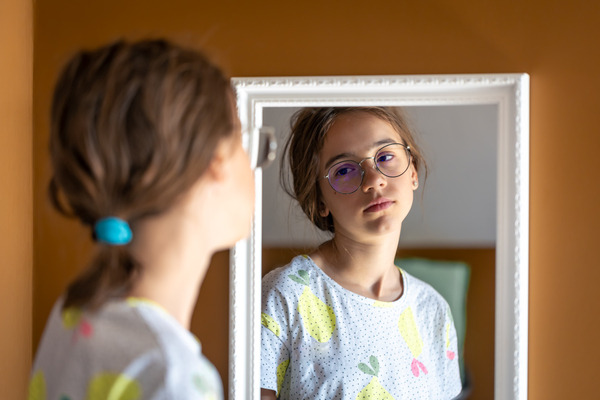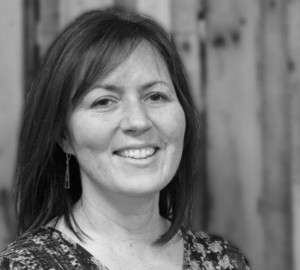
How Counselling Can Help Children and Teens Navigate Body Dysmorphic Disorder (BDD)
In a social media landscape obsessively focused on body image, the reflection in the mirror can become a battleground for many young minds. Body dysmorphic disorder (BDD) is more than just fleeting insecurity; it’s a chronic condition that leads to corrosive self-image and, often, the development of associated mental health conditions. For parents and caregivers, identifying the symptoms of body dysmorphic disorder and addressing your child’s low self-esteem can be a challenging, often heart-wrenching, responsibility.
This blog post dives into how child counselling, with its nuanced and empathetic approach, can be a lifeline for children and teenagers grappling with BDD.
Understanding Body Dysmorphic Disorder (BDD)
Before we can explore how counselling helps children with BDD, we need to understand what this condition entails. Body dysmorphic disorder is a complex mental health issue characterized by obsessive thoughts about perceived flaws and defects in one’s physical appearance, which aren’t noticeable to others.
These perceived imperfections can lead to intense emotional distress and, in severe cases, interfere with daily functioning. BDD is not just an adolescent phase; it’s a serious mental health condition that can persist into adulthood if not addressed early.
Symptoms of Body Dysmorphic Disorder (BDD)
Recognizing the symptoms of body dysmorphic disorder is crucial for early intervention and support. Common signs that your child is struggling with their body image include:
- Excessive grooming
- Frequent mirror-checking
- Skin picking
- Seeking reassurance about their appearance
- Comparing themselves to others
- Avoiding social situations and/or social anxiety
Peering into the Heart of BDD: Causes and Triggers
There’s no single cause for BDD; it’s typically a combination of genetic, neurobiological, psychological, and environmental factors. Some triggers include:
- Childhood teasing or bullying
- Body shaming from peers or family members
- Certain personality traits, such as perfectionism
- Pressure or criticism related to appearance from family or peers
- Changes in physical appearance that provoke self-consciousness
Understanding the root causes is crucial in crafting a treatment plan for body dysmorphic disorder that resonates with your child.
How Counselling Can Help Children with BDD
Counselling is a versatile tool that provides children and teens with a variety of strategies and resources to manage BDD. Here’s how counselling can help your child in their recovery journey.
- Allows for a Better Understanding of BDD: An initial step in therapy is helping your child understand what BDD is and what it is not. It’s about realizing the paralyzing fear attached to perceived physical flaws and how these perceptions are different from reality.
- Provides a Safe and Supportive Space: Psychotherapists for children and teens provide a safe space where young individuals can express their fears and insecurities without judgment. This supportive environment is critical, as it empowers children to open up about feelings that they may have been bottling up for a significant amount of time.
- Helps with Managing Difficult Emotions: Managing intense emotional upheaval is at the centre of counselling. With various techniques, therapists can help children and teens recognize, tolerate, and express their emotions in constructive ways, breaking down the tendency to internalize and spiral into despair.
- Boosts Their Self-Esteem: Counsellors work meticulously to foster a sense of value and approach self-image with kindness. This process involves exploring achievements, strengths, and other elements that are not solely tied to physical appearance to boost the child’s low self-esteem.
- Manages Anxiety and Compulsive Behaviours: Teen therapists guide children through exercises that diminish social anxiety and reduce compulsive behaviours. Exposure strategies are often utilized, allowing the child to confront their fears in a manageable way, eventually leading to a reduction in the overwhelming anxiety they experience.
- Enhances Social Functioning: BDD often causes children to withdraw from social interactions, fearing judgment and ridicule. Counselling helps children struggling with their body image relearn social skills and build resilience to interact with their peers more comfortably.
- Addresses Co-Occurring Mental Health Issues: BDD rarely travels alone; it is often accompanied by other mental health issues. Therapists skillfully address these co-occurring conditions, considering them as part of the holistic treatment approach for body dysmorphic disorder.
- Builds Resilience and Recovery: Recovery is not a destination but a continuous process. By instilling resilience, counselling equips children and teens with the tools to face future challenges without succumbing to the negative self-perception that BDD fosters.
- Helps to Develop Healthy Coping Mechanisms: Counsellors and therapists help children and teens develop a repertoire of healthy coping strategies to manage stress and maintain their mental well-being. These strategies can range from mindfulness exercises to engaging in physical activities that promote a positive body image.
Tailoring the Therapy Approach for BDD
Various counselling approaches have been proven effective in addressing body dysmorphic disorder. Here’s a look at them:
Cognitive-Behavioural Therapy (CBT):
CBT is a structured, time-limited approach that helps individuals recognize and change negative thought patterns that influence their feelings and behaviours. In the context of BDD, CBT interventions focus on altering perceptions about body image and reducing compulsive behaviours related to appearance preoccupation.
Exposure and Response Prevention (ERP):
ERP is a specific form of CBT that exposes individuals to the situations, images, and thoughts that make them anxious and teaches them healthy ways to cope. For children with BDD, ERP can involve exposure to feared body parts or situations that induce anxiety about their appearance.
Acceptance and Commitment Therapy (ACT):
ACT focuses on accepting uncomfortable thoughts and feelings rather than trying to control them. The psychotherapist works with the child to identify their values and commit to actions that are in line with these values, even in the presence of anxiety and negative self-beliefs.
Family Therapy:
Body dysmorphic disorder can have a significant impact on family dynamics. Family therapy allows for all members to have a voice and enhances the understanding of BDD as a family issue rather than an individual problem. This approach can be particularly beneficial for younger children with BDD.
Looking for Experienced Psychotherapists and Child Counsellors in Burlington?
If your child is struggling with their body image and/or you suspect they might be dealing with body dysmorphic disorder (BDD), talk to the experienced child and teen therapists at Family Matters Centre.
BDD can cast a long shadow, but with the right therapeutic guidance, children and teens can learn to love the reflection in their mirrors and, more importantly, their true selves.
If you’re looking for effective treatment for body dysmorphic disorder in the Burlington, Hamilton, or Oakville area, call us today at (905) 466-8023 or fill out our contact form to request an appointment.

by Shari Markovich
Shari is a Child Therapist who has worked with children and adolescents for more than 20 years. She uses a variety of counselling modalities, including Theraplay®, Cognitive Behavioural Therapy (CBT), and Family Systems. She is motivated to work with children and parents so families can function in healthy and supportive ways.



